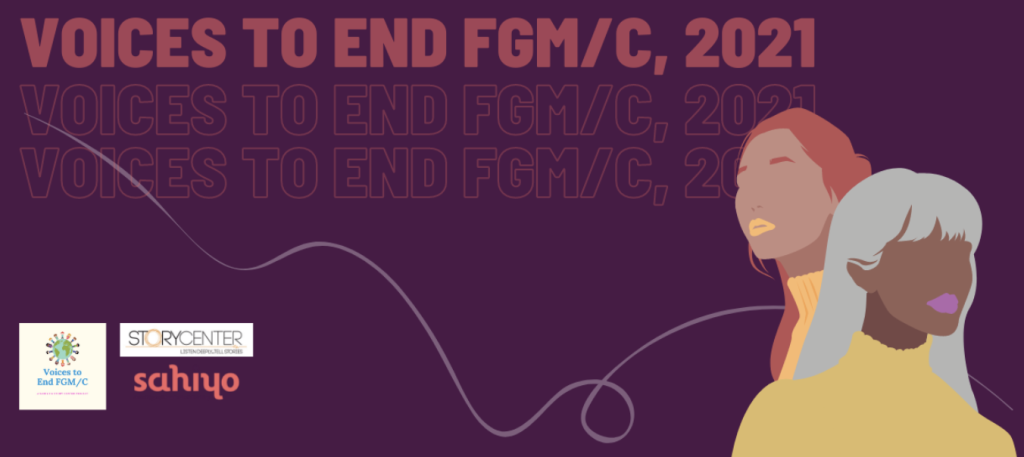Understanding female genital mutilation/cutting: An ally’s call for action

By: Farhanaz Hazari Age: 18 My fight against female genital mutilation/cutting (FGM/C) can be traced back to the day my mother and sister had a discussion with me on how young girls from the age of 7 are subjected to FGM/C or khatna, as it is known in the Bohra community. They explained it in simple terms, as I was still in school and unfamiliar with the practice, and guided me on how to approach the subject. They educated me on who conducts this act and where it is conducted and for what reasons. They told me that it was taboo to talk about it freely and also to never ask if anyone had been subjected to khatna. After hearing this from two people that are close to my heart, I trusted their word and never asked anyone about it. I had no idea little girls were subjected to such pain and trauma. They are children, after all. Aren’t they supposed to play with dolls and fight for the window seat on the bus ride home? Why are people insisting on controlling girls from such a young age? Why are they putting them through this mental trauma? Why isn’t anyone speaking up against it? All these questions were flooding my mind and all I wanted was someone to tell me this isn’t happening anymore. To think I was hurt and frustrated would be an understatement. I was angry and sad at the same time. I thought this is a tradition that had been shunned and looked down upon by many communities around the world. But to my misery that was not the reality. The next time I came across the word khatna in one of the books in The Princess Trilogy by Jean Sasson, it brought me to tears. At that point I knew I had to do something to raise awareness against it or simply make it known to people that it is a violation of a girl’s body. I read up about female genital mutilation/cutting and learned about how its roots were traced back to Egypt. I learned about the four types and how there is no scientific evidence to help women medically in any way. Being a student of law, I have the opportunity to speak up and back my reasoning with legal knowledge. FGM/C infringes upon the girl child’s human rights, such as the right to bodily autonomy, equality, right to life and personal liberty, which includes the right to be free from any form of violence. After the young girls are cut, they may die, or bleed continuously and/or develop an infection, which violates their right to have a healthy life under Article 21 of the Constitution of India. Justice Chandrachud also stated, “One has supreme authority over genitalia. It is central to one’s identity, dignity and autonomy.” The recognition of the harms of FGM/C is increasing day by day as many are filing petitions, raising their voices and sharing their stories with the help of nongovernmental organizations. I have the opportunity to voice my thoughts against the practice with the help of Sahiyo, and for that I am eternally grateful. The Pakistani activist Malala Yousafzai said, “There’s a moment when you have to choose whether to be silent or to stand up.” I say stand up. Raise your voice and help put an end to FGM/C.
Voices reflection: Sharing my narrative

By Zahara Before I participated in this year’s Voices to End Female Genital Mutilation/Cutting (FGM/C) workshop, I had seen blurbs from previous years. In my head, the Voices program was an in-person workshop where a community of people got together to share their stories. However, COVID-19 happened, and this in-person experience was transformed into a virtual series. I was nervous going into the workshop. I missed the first two live sessions because of time-zone differences, and when I finally made it to a live session, the community already knew each other. Yet, I was embraced with much warmth and found myself comfortable to share my story almost immediately. [youtube url=”https://www.youtube.com/watch?v=8vnXlYAaQrI”] A part of the Voices program is to tell your stories through a video narrative. It is almost paradoxical that I chose somewhat chirpy tunes and colorful images to accompany my story of coming to terms with khatna, or female genital cutting as it is known in the Bohra community. Though I was sharing a narrative I have hidden in the crevices of my mind for years–a story I am just weaving together, a fact that still brings me pain– I wanted to emphasize the radiance and calm that came with healing. I wanted to leave the viewer on an upbeat note–a note of hope. This coming together of a community of women sharing stories, tears, joys, aspirations, dreams, fears, and sacrifices was healing. The film editing is over, the written drafts are ready to be published, but the cathartic part of this workshop will live on in me. Coming together with this community has allowed me to come to terms with myself. Something in me was always reluctant to voice my story before the workshop. I wrote about it, preferred to text about it, but refrained from talking. My voice is louder; I am more willing to share; and maybe I will have a conversation face-to-face one day. Learn more about the Voices project here.
